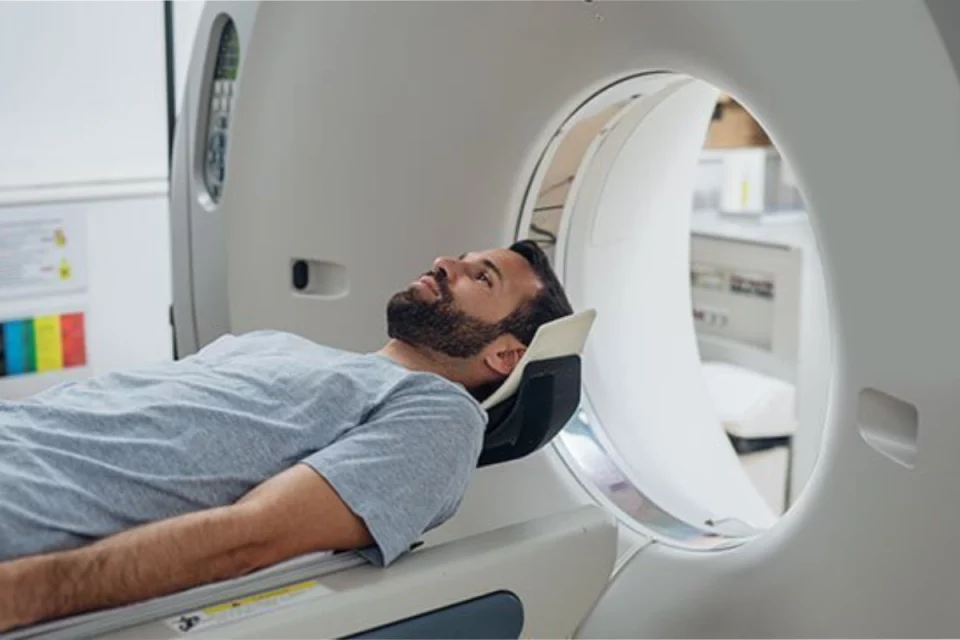Table of Contents
Introduction
Dynamic magnetic resonance imaging (dMR) is helpful to evaluate the unstable cervical spine; it evaluates soft components of the cervical spine and dynamic cervical movements.
Objective
To describe and analyze the frequency of presentation of herniated discs with static MRI and compare with dMR.
Method
From December 2014 to February 2016, patients with cervicalgia and suspected cervical instability evaluated. An observational, descriptive, cross-sectional study was performed, where images obtained in flexion and extension were analyzed using a device compatible with MRI.
Results
Twenty-nine patients entered the protocol; seven were excluded—average age: 50 years. Of the 22 patients, 154 intervertebral discs evaluated, demonstrating 52 herniated discs, 78% disc protrusions—the most affected level: C5 (31%). The dynamic maneuvers showed that 30 were unstable, showing modification during the flexion and extension maneuvers; 22 hernias remained stable. Five patients demonstrated bone instability of vertebral bodies.
What is Spinal Magnetic Resonance Imaging?
The test is performed in a high-field semi-open machine or an open machine if there is claustrophobia. The study is carried out with the patient lying on their back with their head outside the magnet. Several sequences carried out in the complete spinal column planes, visualizing both bone structures and soft parts (discs, nerves, cervical cord). Sometimes the administration of contrast will be necessary. It is a safe and painless test.
What does the Test Include
Duration of the test between 15-25 minutes.
In the event of having to use contrast for the test, it is not included. If needed, its price is € 50 to paid at the clinic.
Requirements
To carry out the test, it is necessary to provide the medical prescription of the test.
Its recommended to attend on an empty stomach (4-5 hours before the test appointment).
If you have reactions to medications, allergies, asthma, or serious illnesses, or if you are carrying a prosthesis or other metallic object, notify it upon arrival at the clinic.
MRI of The Whole Body
Necessary: It does not include Sedation or Contrast. This type of MRI is not valid for cancer patients (Metastatic Study). Contact us if you have prescribed this type of test.
What is a Resonance?
An MRI scan is a test that makes images of the bones and tissues inside the body using a magnetic field, radio waves, and a computer. By not using X-rays, it does not have any danger to the body.
The machines used for an MRI can have a field of view of about two meters, which allows full-body studies.
What is a Whole Body MRI Like?
That is to say, The patient must be stretched out on his back on a stretcher table, will insert into the machine where the images are taken in the plane and 3D. This cabin has a circular shape and is open at the ends.
Even though a whole-body scan performed, rather than just one area, time is not much longer. It is approximately between 20 and 45 minutes.
If the doctor considers it necessary will use contrast, a substance that makes it possible to study specific parts of the body with more precision. Before, will question you about whether you have an allergy. In the same way, it will be necessary to inform the doctor if you have any metal in your body, such as a prosthesis, nails, or a pacemaker.
What is a Whole Body MRI for?
Above all, A whole-body MRI is ideal for studying the body from head to toe in people without symptoms. Finding an abnormality in an asymptomatic patient will allow for better treatment and cure.
It is also useful when lesions are in more than one part of the body or to assess tumor and functional processes.
Conclusions
We can use the dMR in our environment since the acquisition cost is low and provides information for the evaluation of spinal disc instability, showing findings not visible in sMR. I am obtaining a relative risk of 16 and p < 0.05.

